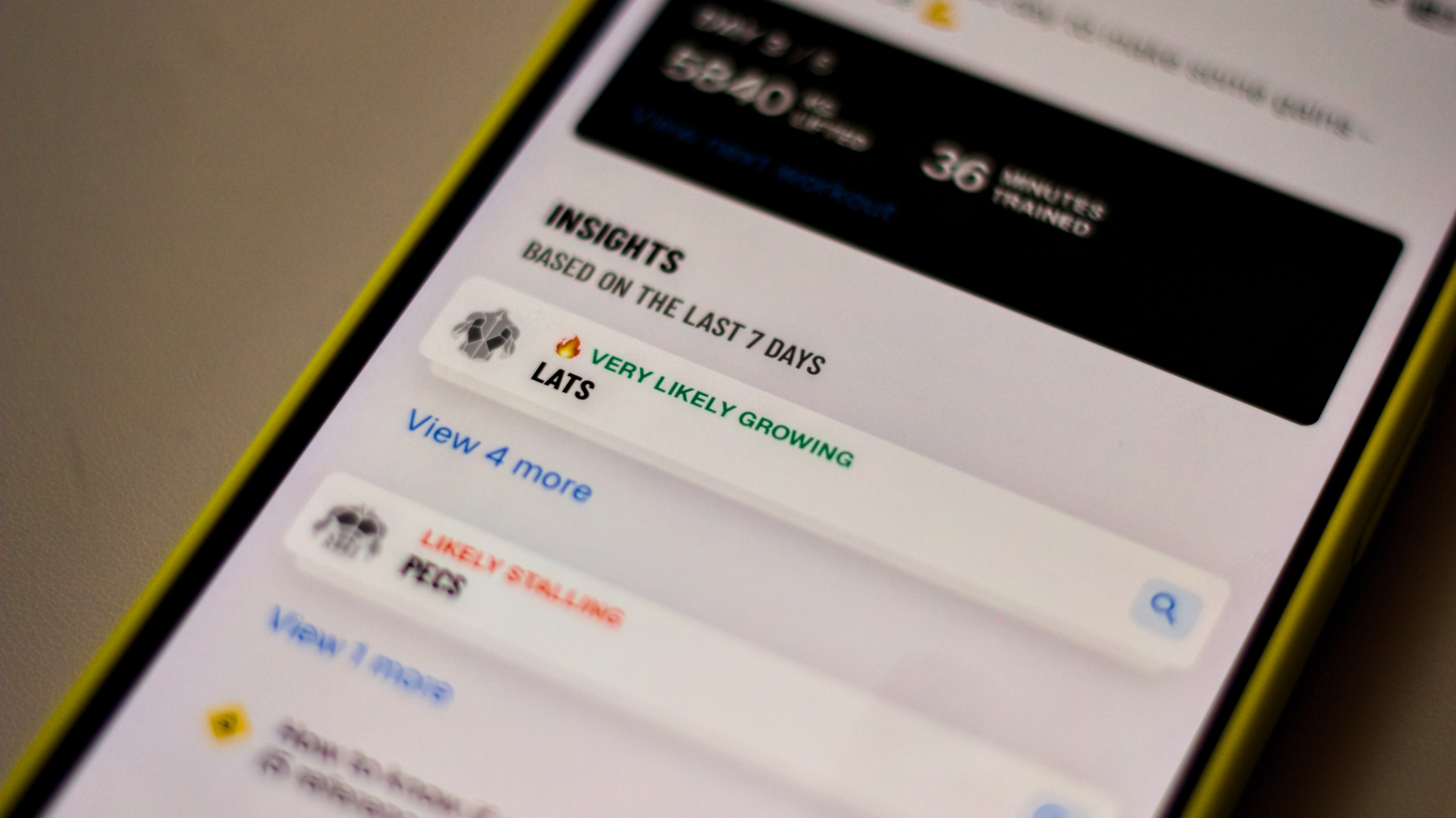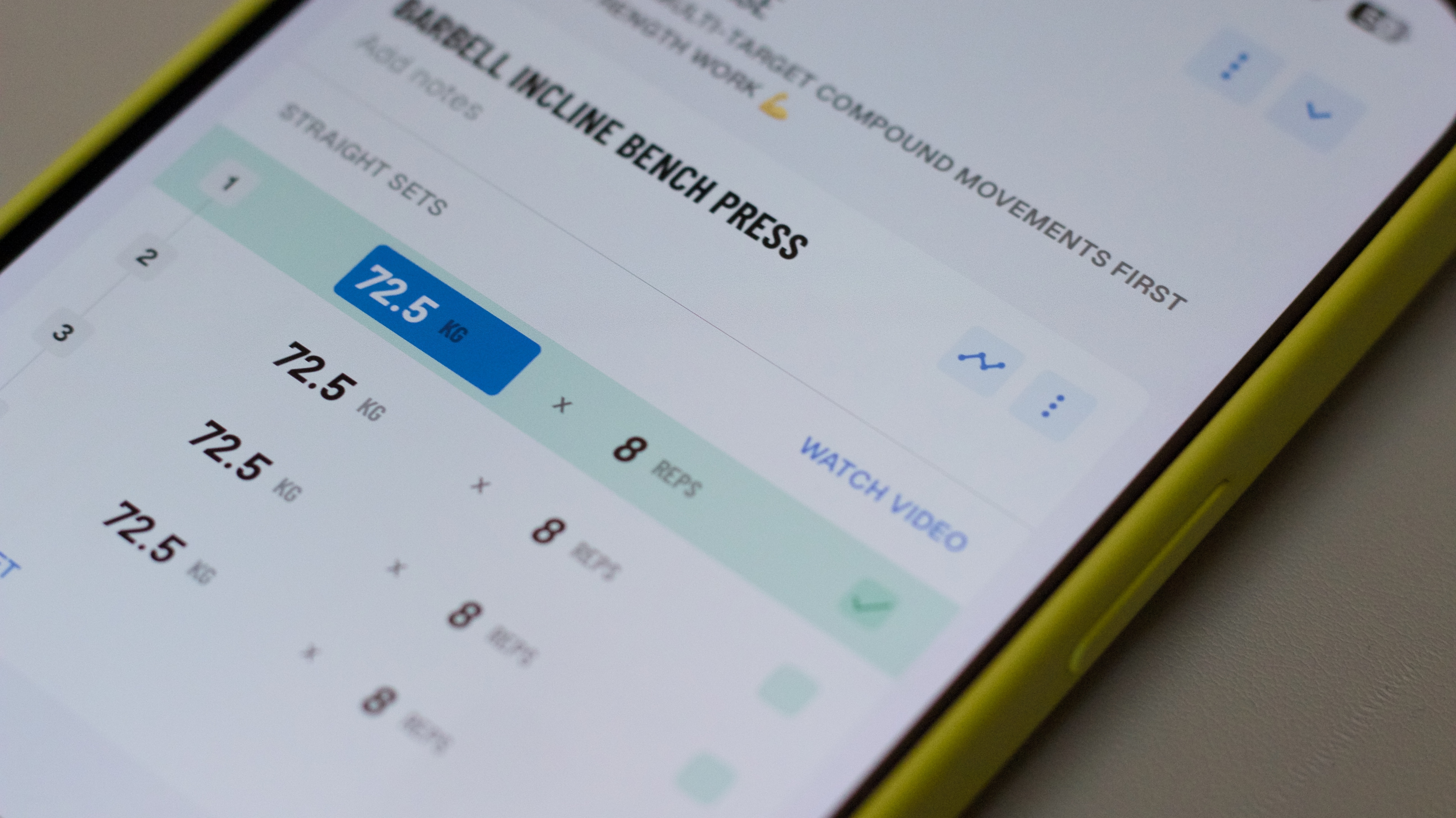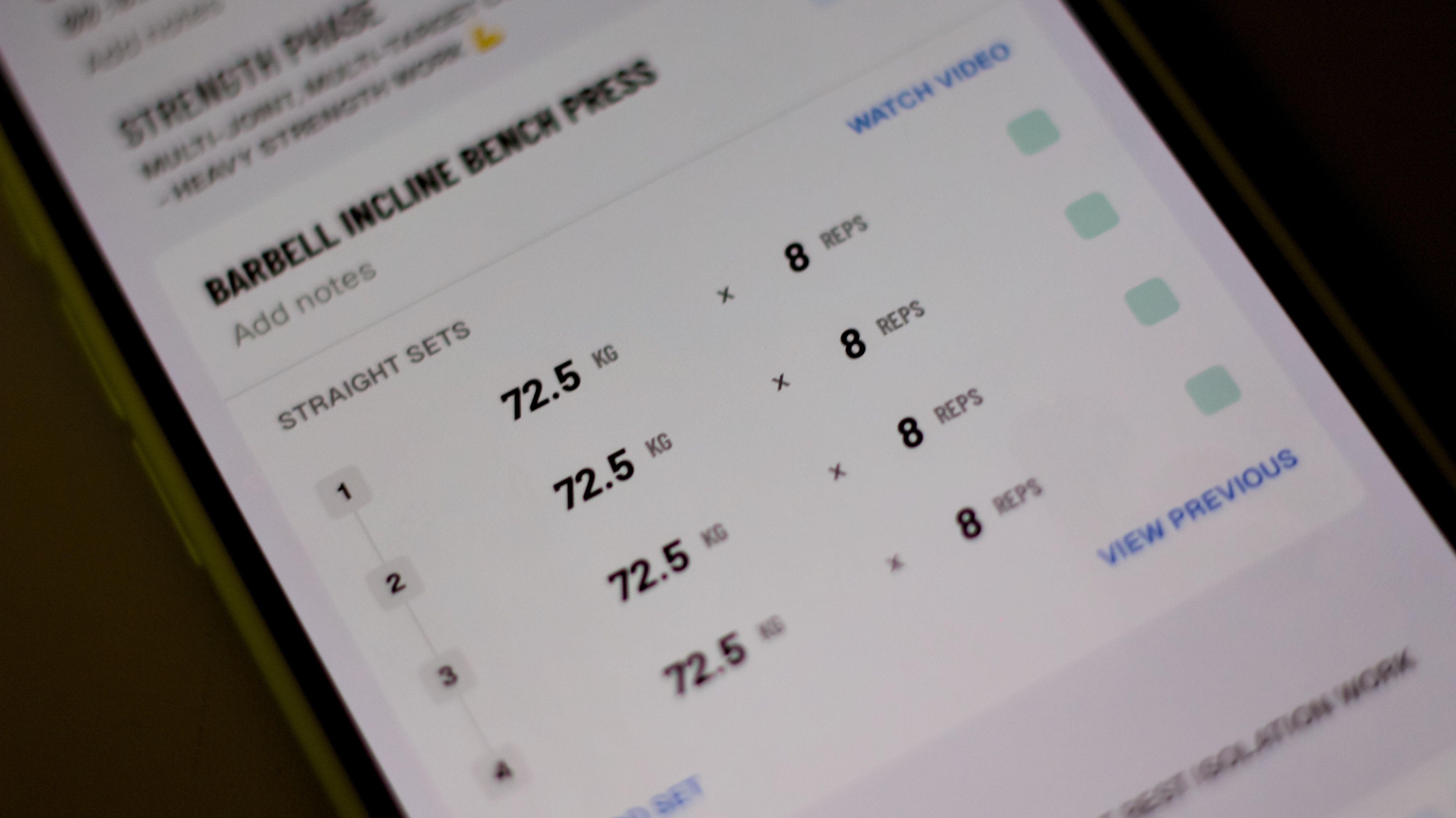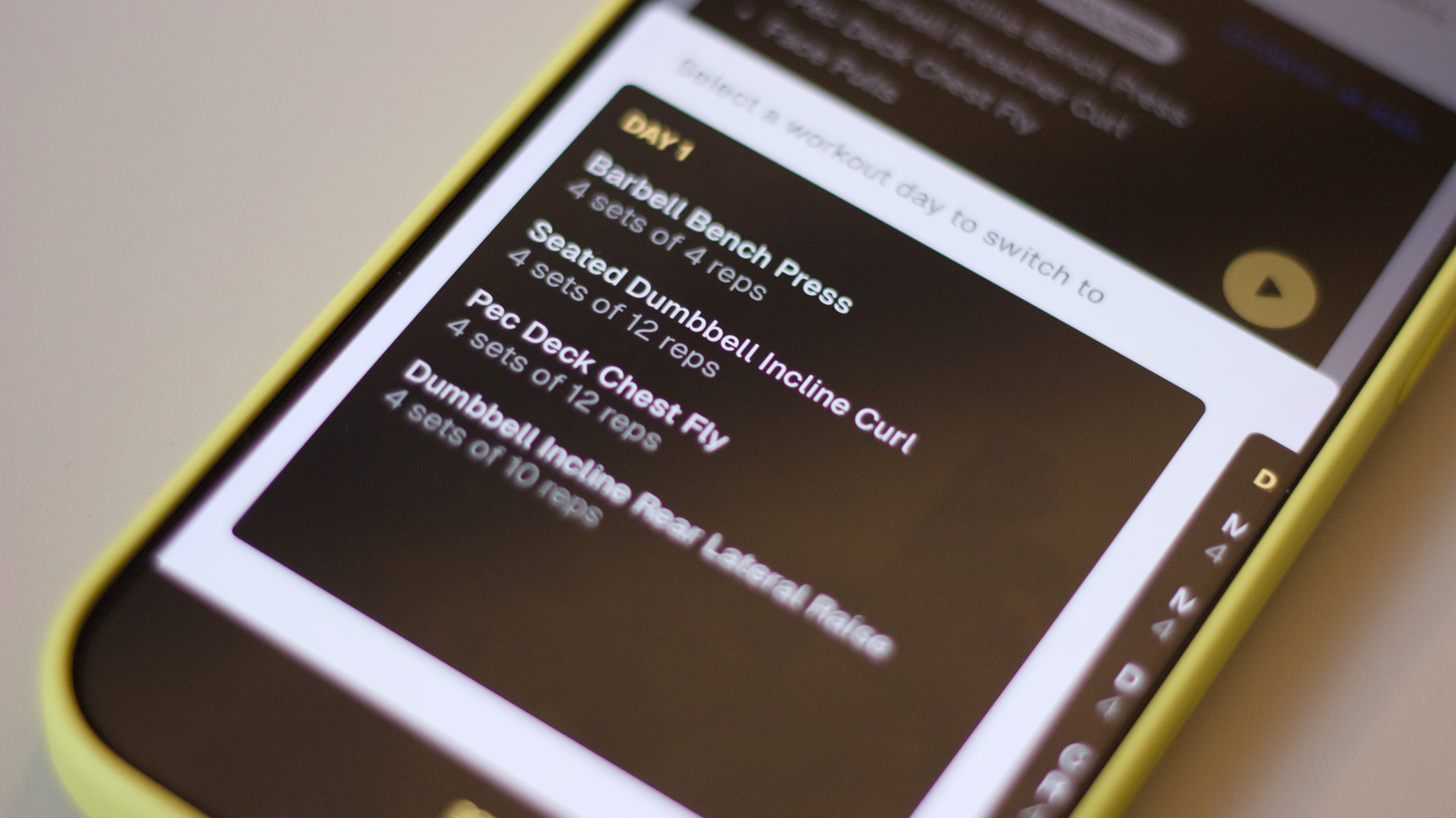Push Two Minute Review
After a year as my fitness companion, PUSH Workout & Gym Tracker has become an indispensable part of my training plan. PUSH is the brainchild of fitness influencer i YouTuber Joe Delaneyand is designed to do one thing exceptionally well. It’s an app designed to help you build muscle as quickly as possible using AI-powered training programs, close exercise tracking, and measured progressive overload.
The first thing you’ll notice about PUSH is its sleek and well-built interface. Exercise and fitness apps often create a cacophony of bright colors, images, text and numbers, but that’s not the case with PUSH. You can tell that a lot of effort has been put into the user interface and user-friendliness of the app. Fonts, menus and icons are well thought out, spacious and yet versatile. There are only a few colors on a white background, and a traffic light system helps signal progress, PB and plateau at a glance.
The first time you use PUSH you will be asked to generate an exercise plan. Plans are flexible but range from three to six sessions per week. You can also choose your preferred split (a gymnastic word for a sequence of training sessions), choosing between “full body” or “push-pull-leg” sessions. The latter is more familiar to most gym-goers, but the former is the most optimal split in which muscles are grouped together to minimize fatigue during exercise.
You will also be asked about your sleep and stress levels, training experience and which muscles you want to focus on before finally determining the level of equipment available. You can even replace specific exercises from your plan before you start them, and over time the app will provide recommendations if you generate new plans, such as increasing or decreasing exercise frequency. The plan generation software is really simple and easy to use, so you always feel like you’re getting the right program for you.
Once you have your program, it’s time to get started. You can view upcoming workouts and scroll through the days to see what’s on the program, giving you a good overview of how your week is going. You’ll probably be surprised to find a fairly diverse mix of exercises throughout the week. You’ll often train legs, back, arms, chest, arms, torso and more on the same day or together in ways you might not expect, but it’s all part of the optimization process at the heart of PUSH. I was a bit unfamiliar at first, but I definitely felt the benefits of changing up my training program and distributing the load more evenly across different muscle groups.

(Photo: Future / PUSH)
The workouts are divided into phases, so you’ll start with a strength phase of heavy weights and low reps, with at least three minutes of rest. You then move on to stabilized mixes such as lateral pull-ups, before finishing with a push-up phase with lighter weight, more reps and less rest. For each exercise you will be given very clearly marked target weights and number of repetitions. Simply check the box by touching it with your thumb to mark a set and start the rep counter. You can manually adjust your entries if you don’t hit your rep target or lift more weight than stated in the app.
Over time, the AI will track your progress and eventually suggest a new weight or increased reps. This will become clearer as you use the app, but it’s very motivating and gives you an amazing sense of progress. If you get stuck, he or she will recommend a “plateau-breaking” exercise or you can try again. You can also change exercises on the fly during training.
The app shows your progress over the last seven days, highlighting muscles that are likely to be growing or stopping, which can help you refocus your exercise efforts. Each exercise is accompanied by a helpful animated instructional video, although beginners may find the lack of instructions a bit discouraging.
There are a few quirks to using PUSH. I don’t like the lack of volume control for the rest timer. This is related to the volume of your music (at least on iPhone), so the louder your music or podcast is, the louder the beep at the end of the rest period. Artificial intelligence is not infallible either; I recently hit a 100kg bench press plateau and the AI suggested I try to break the plateau at 1002.5kg instead of 102.5kg.
It seems unfair to judge the app as serving only one purpose, but potential users should be aware that PUSH is focused solely on building muscle mass in the gym. You won’t find any pilates, movement training, cardio or any other discipline here: it’s all about strength. The only other possible downside is the price: at $89.99/£89.99/AU$144.99, the annual subscription is a big commitment, and some people may find the monthly cost too much to bear compared to the price of, say, Apple Fitness Plus or Fitboda.
Overall, however, it has been a pleasure to use the app over the 12 months that I have been a customer and is well worth the financial investment. And there’s still a lot ahead of us, creator Delaney announces changes to the application on his Instagramso there’s never been a better time to start using what is undoubtedly one of the best fitness apps on the market.
Push: Price and availability

(Image source: Future)
Push is available worldwide in the Apple App Store for iPhone and the Google Play Store for Android. There is a short free trial period, after which you will pay $89.99 / £89.99 / $144.99 per year or $15.49 / £14.99 / $23.49 per month to use it.
Press: Technical data
Swipe to scroll horizontally
| Platforms: | iOS (tested), Android |
| Price: | $89.99 / £89.99 / $144.99 per year or $15.49 / £14.99 / $23.49 per month |
| Pairs with your device: | iPhone or Android smartphone |
| Guided content: | Muscle and strength training based on artificial intelligence |
| Video content: | Exercise tips |

(Photo: Future / PUSH)
Press: Scorecard
Swipe to scroll horizontally
| Category | Comment | Result |
| Value | Definitely pricey when it comes to fitness apps, but I find them invaluable. | 4/5 |
| Design | The design of this app is probably its greatest feature, the interface is a pleasure to use and tracking your workouts is a pleasure. | 5/5 |
| Characteristics | Very powerful AI-powered program generation, training and rest tracking, and a collection of peer-reviewed literature. | 5/5 |
| Efficiency | Overall strong but gradual AI overload can be quirky at times, and there’s no volume control for the rest timer. | 4.5/5 |
| Total | A well-designed app with few flaws. | 4.5/5 |
Push: Should I buy?

(Image source: Future)
Buy if…
Don’t buy if…
Also consider
Swipe to scroll horizontally
| Row 0 – Cell 0 | Press | Apple Fitness Plus | Fitboda |
| Platforms: | iOS, Android (tested) | iPhone, iPad and Apple TV | iOS and Android |
| Price: | $89.99 / £89.99 / $144.99 per year or $15.49 / £14.99 / $23.49 per month | $9.99 / £9.99 / AU$14.99 per month | $12.99 / around £10 / AU$20 per month |
| Pairs with your device: | iPhone or Android smartphone | Apple Watch | Phone, a companion app available for Apple Watch. |
| Guided content: | Muscle and strength training based on artificial intelligence | A wide range of exercises and disciplines | Lots of exercises |
| Video: | Exercise tips | Extensive library of training classes | Guided demonstration video for each exercise |
How I tested
I paid to use PUSH for a year and have used it six times a week every week for the last 12 months. I generated many new plans to implement and used its features throughout the year, doing daily workouts using the app. All of my tests were conducted on an iPhone 15 Pro Max or iPhone 16 Pro Max.